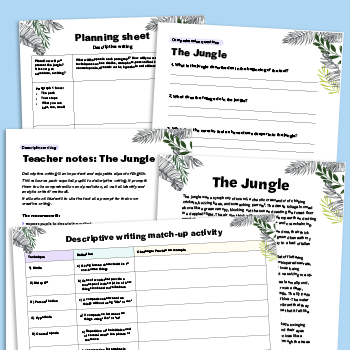KS3 English – The challenge of teaching accuracy

Chris Curtis suggests some ways of attending to common mistakes and inaccuracies that all students make at some point, so that they don’t become a fixed habit…

- by Chris Curtis
- English teacher, head of department and author Visit website

Why do students struggle with accuracy?
Aside from some who have genuine cognitive wiring issues, we can usually put students into three behavioural camps: the ‘haven’t been taught’ group, the ‘blindness’ group and the ‘lazy’ group (I’ll address dyslexic students shortly, and obviously exclude them from these categories).
I have two daughters and, like all good teachers, observe how my children learn. One is a great speller, but she can be lazy and so will get the occasional word wrong. The other rushes to get her ideas on the page so quickly that there are always several mistakes.
When questioned, one can see the mistakes while the other can’t and needs directing to them. One child is lazy with spellings, the other is blind to them – which is interesting, as they are identical twins.
There are some students who struggle with spellings and spotting errors because the writing is hard to decode, and I empathise with them – but not every student who cannot spell is dyslexic, and it is unfair to dyslexic students if that myth is propagated by teachers.
Although everybody is on a spectrum, dyslexia is a complex issue, and there is more to it than just spelling.
If a parent raises a concern about their child, point them in the direction of the teacher in charge of SEND. Spelling is a small part of dyslexia, but not the one and only marker.
And we need to be careful of pronouncing every child who can’t spell, or who mistakes ‘b’s for ‘d’s, a dyslexic student. A label can help support a child, but an incorrect label can be a shield to hide behind, stopping the real issue from being fixed.
Accuracy should be the classroom’s air freshener. You might need it more sometimes – especially after Y9 PE – or you might turn it down occasionally if it risks becoming overpowering, but it is always there. In some form. In some manner. In some way.
Three spelling choices
This strategy plays an active role in helping students get better at spelling and addresses the error blindness mentioned previously, making them take more responsibility for their spellings.
First, the student identifies the word they struggle to spell – this can be done during or after writing. Then, on a scrap bit of paper, the student writes down three possible ways to spell the word. The student looks at the three alternatives and decides which one looks right:
implys / implies / implis
More often than not, they select the right one. I’ve seen students improve their spelling overnight with this approach. It won’t work for students with poor visual memory, but does help some.
Students often think that spelling needs to be an automated or quick process, and don’t like using a dictionary because it slows them down when they want to be seen to keep up with the rest of the class. This approach allows them to do things quickly, and save face in the classroom
Draft in threes
I love drafting in lessons. Mainly because there is less lesson to plan, but also because it gets you to the heart of the writing process and the problems students have with specific parts. I will often insist they draft in threes:
- Draft 1 will check they understand the task
- Draft 2 will check that they have addressed any writing issues
- Draft 3 will be the polish
This repeated process is really handy, because each draft is flagged as a different task and has a different impact on different students. The good writers use the drafting process to refine and hone their work and the weak writers make large leaps in progress.
Draft 1 contains no punctuation, whereas draft 2 contains some secure use. Writing is hard. Students get things wrong. It may seem that punctuation, for example, is obvious, but 11-year-olds can get so involved in the moment and their ideas that they forget about its existence.
I like to simplify the marking sometimes and will use a mark out of 10. Take this example, for a student writing a paragraph of a horror story:
- Draft 1 – 3/10 Target: Add more ambitious and effective vocabulary
- Draft 2 – 7/10 Target: Vary how you structure your sentences
- Draft 3 – 9/10 Target: Be more creative with how you present your ideas – steal ideas from the examples in the lesson
This example shows improvement as a process, and teaches students to see it as such. Writing is too often seen as merely the product of learning; as a form of communication that happens when it is assessment time.
Drafting several times is really helpful to me and the students. You see the students who don’t listen and who won’t make progress. You see the impact of your instructions.
Refusal
Students need to know that we have high expectations of them. If I mark a piece of work that doesn’t use punctuation, it tells them they can hand it in like this again. It is amazing how much of an impact you get from telling a student that you are not going to mark their work until they have done X.
We must articulate when effort or attention to detail is not good enough. A lack of care shows a lack of respect. The student should be working harder than the teacher. I always think that the way we respond to work is important.
Praise everything, and we devalue both the work and praise itself. I tend towards being sparse with praise. Regarding the effort put into a piece of work, praise should be worked for and punishment must be clear.
Refusing to mark or read something until the student has done a bit more work sends a message: I think you are capable of more.
Time and distance
We want students to write with accuracy, but they often get the wrong view of writing. They assume, incorrectly, that accuracy just ‘happens’, and that the quick two-second look they did will spot everything.
Of course, we live in an age where people want things done quickly. We want their writing to be fluent by the end, but students need training for accuracy. A quick five minutes at the end of the work is not enough.
Accuracy is improved by repeated reading. Students write in the moment. That’s why they can write whole paragraphs without using full stops, or whole stories without using paragraphs. To most, the ideas are more important than the style when you are in the flow of creativity.
Students rush because they are worried that those really good ideas, like mice running around in their brains, are going to escape and disappear. Build time in for students to forget what they have written.
The next lesson isn’t enough, to be honest – it needs to be at least a week. Coming to their text as a new reader will give them fresh eyes. Students can then spot their own mistakes from a mile off.
They are quite happy to spot your typos on a PowerPoint or Year 7 English worksheets from 10 paces with glee and pride. We are attuned to the errors of others. Many times I have been tempted to write to a publisher when I spot an error in a book.
Of course, to speed things up you can get students to proofread each other’s work; however, I think it is important that they each understand their mistakes.
Visibility
A lot of students get the words ‘a lot’ wrong. In my time I have seen several versions, but the preferred option is usually ‘allot’ or ‘a lot’.
Why is it that students make this mistake over and over again? Well, it is relatively simple. Say the following sentence out loud:
‘A lot of gardeners own or rent an allotment, and the owner allots a fixed amount of space for each person.’
Did you notice how you say ‘a lot’ in the same way as you say the opening of ‘allotment’ and ‘allots’? You say it without any pauses. In fact, we all do it. Is there any wonder why students write it as one word when this is how it is spoken?
To combat this, every time I come across it while reading aloud, I place emphasis on the gap and put a pause between the ‘a’ and the ‘lot’. There are lots of mistakes that students make, and I think we have to be explicit about drawing attention to them.
Chris Curtis is an English teacher; this article is based on an edited extract from his book How to Teach: English ((£16.99, Independent Thinking Press); follow him at @Xris32 or visit learningfrommymistakesenglish.blogspot.com.







